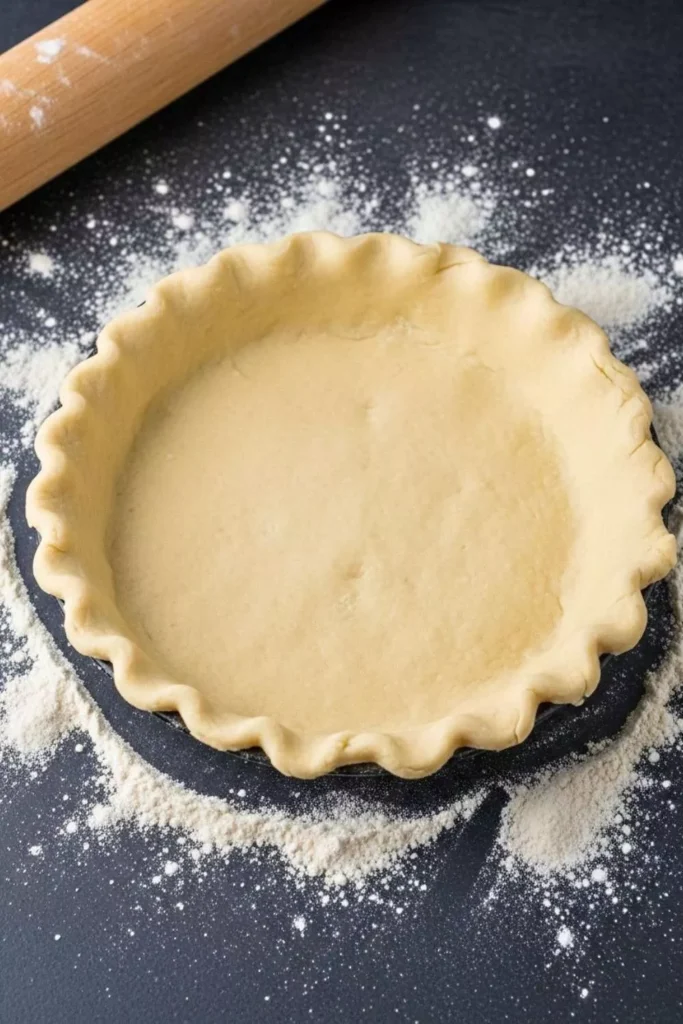If you’ve ever baked a pie and wondered why some recipes call for a splash of vinegar in the dough, you’re not alone.
It might sound strange to add an acidic ingredient to something as simple as pastry, but vinegar can make a world of difference.
From tender, flaky layers to a dough that’s easier to work with, vinegar plays a subtle yet powerful role in perfecting pie crusts.
Reasons to Add Vinegar to Pie Dough
Here are a few reasons why we add the vinegar to a pie dough:
It Helps Prevent Gluten from Overdeveloping
The main reason bakers add vinegar to pie dough is to control gluten formation. When you mix flour and water, gluten strands start to form.
Too much gluten makes the crust tough and chewy instead of light and flaky.
Vinegar, being acidic, slightly weakens the gluten network.
This gives the dough just enough structure to hold together while staying tender. The result? A pie crust that’s easy to roll out and beautifully flaky once baked.
It Keeps the Dough Tender and Delicate
Even a small amount of vinegar—just a teaspoon or two—can make your crust more delicate.
The acid interferes with the proteins in the flour, preventing them from bonding too tightly. This subtle change makes a big difference in texture, especially when the dough is chilled and baked.

If you’ve ever struggled with tough or dense pie crusts, a splash of vinegar can be your secret weapon.
It Makes the Dough Easier to Handle
Vinegar doesn’t just affect texture—it also improves how the dough behaves. Pie dough can sometimes be sticky, crumbly, or difficult to roll, especially if you overwork it.
Vinegar helps by creating a slightly more pliable dough.
This makes it easier to shape, transfer, and crimp without tearing. It’s especially helpful when you’re making intricate designs or lattice tops for holiday pies.
It Adds a Touch of Flavor Balance
While vinegar’s main purpose is functional, it also subtly enhances flavor.
The small amount used doesn’t make your pie taste sour—it actually balances out the richness of butter or shortening.
This light acidity rounds out the overall flavor, giving your crust a clean finish that complements sweet and savory fillings alike.
It Helps the Dough Last Longer
Another bonus: vinegar can slightly extend the dough’s shelf life.
Because of its acidity, it helps slow down oxidation and bacterial growth, keeping your dough fresher for a little longer in the fridge.
This is especially useful when you’re preparing pie dough in advance for holidays or large gatherings.
How Much Vinegar to Use
You don’t need much to make a difference. Usually, 1 to 2 teaspoons of vinegar per batch of dough (about 2½ cups of flour) is enough.
Apple cider vinegar is a popular choice because it adds a mild, pleasant flavor. White vinegar also works well and won’t affect the taste.
Conclusion
Adding vinegar to pie dough isn’t just an old-fashioned trick—it’s smart baking science. That small splash of acid can mean the difference between a tough crust and one that’s buttery, flaky, and tender.
It keeps gluten in check, improves texture, and even makes the dough easier to handle.
Next time you make pie, don’t skip the vinegar—it’s the secret ingredient that helps turn good crust into perfect crust.